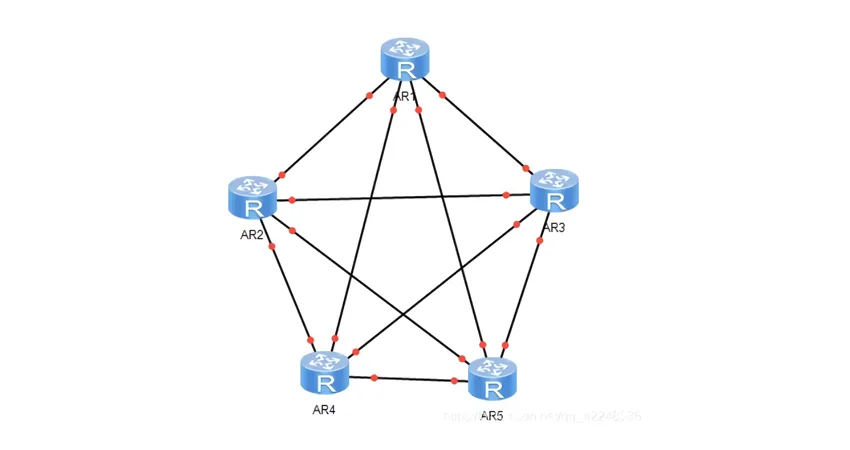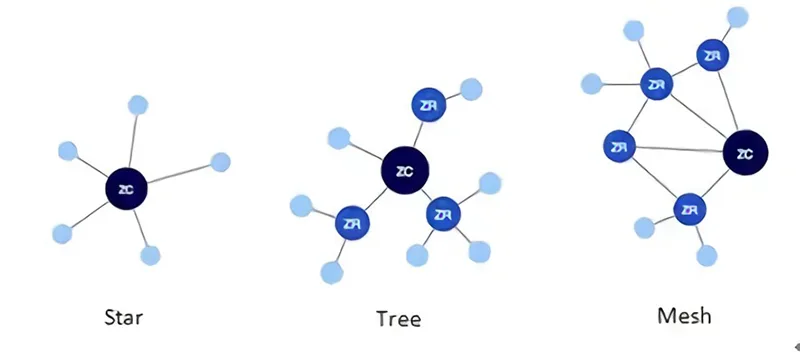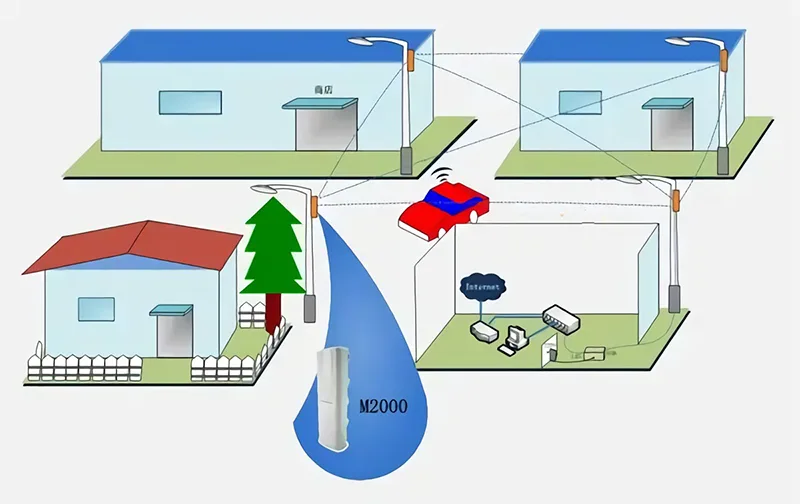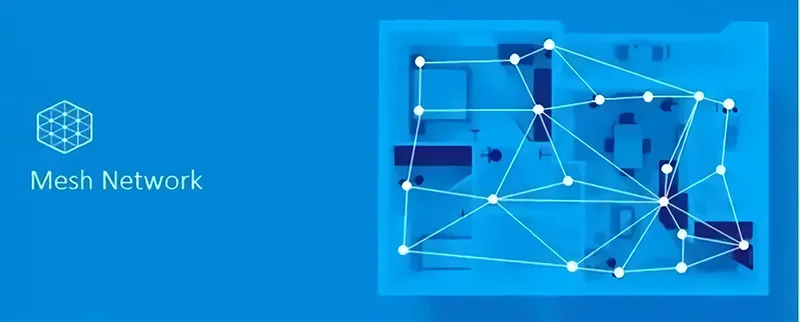Een Mesh-netwerk is een groep apparaten die met elkaar zijn verbonden, Bijvoorbeeld, een IoT-gateway die als één enkel netwerk in uw kamer fungeert, mesh-netwerk is meerdere bronnen van connectiviteit en niet alleen een gateway. Sinds de jaren zestig, netwerktechnologie heeft zich snel ontwikkeld. Traditioneel LAN heeft 6 soorten applicatiestructuren, zoals het bieden van structuur, soort structuur, ander soort constructies, enzovoort. Ze opereren op mondiale schaal, het bieden van datatechnologie en veel stabiliteit. Vandaag, wij zullen de technologie van mesh-netwerken in detail voor u introduceren.
1. Wat is mesh-netwerktechnologie?

De ontwikkeling van netwerktechnologie heeft enorme veranderingen in de menselijke samenleving teweeggebracht. Het heeft de communicatie voor mensen gemakkelijker gemaakt, handiger voor informatieoverdracht, en heeft zelfs bijgedragen aan de technologische revolutie en industriële modernisering. De ontwikkeling van het netwerk van het vroege bekabelde netwerk en het militaire netwerk naar het huidige draadloze netwerk en het wide area netwerk heeft de communicatiekosten tussen mensen aanzienlijk verlaagd.. Netwerktechnologie stelt mensen in staat onmiddellijk kennis te nemen van de zaken van de wereld op het gebied van de mondiale handel en handel, en realiseert zich werkelijk de gelijkheid van de mondiale informatie-uitwisseling. Echter, het pad dat de traditionele lokale netwerktechnologie in het ontwikkelingsproces kiest, lijkt tegenwoordig bepaalde knelpunten en beperkingen te hebben als gevolg van technische beperkingen. De manier om dit probleem op te lossen is door “terug te keren naar de oorspronkelijke bedoeling” en richting het Mesh-netwerk te gaan, dat is, de mesh-netwerkstructuur.
2. Wat is een IoT Mesh-netwerk?

Mesh-netwerk is een lokale netwerktopologiemethode. Het combineert het gebruik van infrastructuurknooppunten (zoals Bruggen, apparaten, en schakelaars) dat zijn direct, dynamisch, en niet-hiërarchisch verbonden om gegevens efficiënt van en naar klanten te verplaatsen. Dit soort netwerktopologie garandeert dat geen enkel knooppunt afhankelijk is van gegevensoverdracht. Dus, als een knooppunt uitvalt, the network can “repair itself” and reroute data using algorithms like “shortest path bridging” (SPB), which are described in the IEEE 802.1aq standard. This makes mesh networks more reliable when connectivity is Paramount and some nodes malfunction or get destabilized.
A mesh network will use flooding, or routing, a technique that usually comes with one kind of data. With the flooding method, each incoming packet is delivered over every available outgoing connection, except the connection arriving from it. Using routing techniques, data hops around other nodes until it reaches its destination, and then is sent to its location. The mesh network then configures itself to ensure that continuous connections are allowed and data is re-routed around unavailable paths. Again, hierdoor kan het netwerk de standaard van betrouwbaarheid en elasticiteit bereiken die hard nodig is voor organisaties die willen profiteren van een laag verbruik, IoT-toepassingen met lage datasnelheid.
3. Hoe werkt een Mesh-netwerk?

Momenteel maakt SIG MESH gebruik van de MESH-netwerktechnologie die is gebaseerd op het overstromingsprotocol.
Het Mesh-netwerk bestaat uit Mobiele Telefoon en Node, waarbij Mobile een smartphone is en dient als besturingskant van het Mesh-netwerk.
Knooppunt is een knooppuntapparaat in het netwerk. Het BLE Mesh-netwerk wordt geïmplementeerd door middel van uitzendingen. De basisstappen zijn:
• A. Stuur controle of lees gegevens van de mobiele terminal naar knooppunt A.
• B. Het bericht wordt uitgezonden door knooppunt A.
• C. Wanneer knooppunt B het bericht ontvangt van knooppunt A, het zendt het bericht uit vanaf knooppunt A.
• D. Naar analogie, use the infection method to spread the message from ten to ten, so that all devices within the wireless range can receive this message.
MESH will also perform special encryption on the data in the network to prevent the theft of network data using monitoring and man-in-the-middle attacks.
4. Mesh-netwerkarchitectuur

Basisnetwerktopologie
The basic structure of the lokaal netwerk includes tree structure, bus structure, star structure, distributed structure, enzovoort. The star structure is the most widely used now. The advantages of this structure are high punctuality rate, simple structure, and easy management. Its disadvantages are low reliability and higher cost than other structures. The star structure takes the middle and node as the center point, and other nodes are connected to this center point. The bus-type structure has a relatively simple structure and strong expansibility, but it has the disadvantages of being difficult to maintain and difficult to find faults in the branch structure. The bus-type structure has no obvious center, and each network device is attached to a bus. For safer and more efficient use, Momenteel, the vast majority of commercial LANs in operation adopts a combination of a variety of network topology patterns to ensure maximum performance of the LAN and avoid obstacles.
Typisch gaas (Mesh-netwerk) structuur
When it comes to Mesh, it means “net”, “Mesh” or “Mesh”. It’s very simple. From the basic meaning of Mesh, the topology of a mesh network is as follows: all network nodes in it are connected one by one to form a complete network, and one node is connected to at least one more node. In the era of a limited network, it is very difficult to realize the network with a Mesh layout based on the network cable. In the wireless era, without the constraints of network cables and the use of various new technologies, the layout of wireless Mesh networks is relatively simple.
5. Draadloze technologie in mesh-netwerken

Onderhandeling via meerdere kanalen
When Wireless Mesh Network Accesses all kinds of Channels, the MP nodes in the network can only listen to one channel once. On behalf of using more channels, the nodes must dynamically toggle between the different channels available. This requires a coordination mechanism to ensure two communication channels. All nodes work on the same channel. One way to handle this is to partition the timeline into beacon separations, at the beginning of each beacon separation, build a time window called ATIM, and require that at the beginning of the ATIM time window, all nodes in the network are forced to toggle to the same channel. In the ATIM window, the node that has data to send uses the control message to negotiate the channel with the receiver.
Kanaaltoewijzing
Channel allocation technology is largely applied to the management and use of more channels in a multi-channel wireless Mesh network. While ensuring good network connectivity, it reduces the probability of channel conflict in the Mesh network and improves network efficiency. Unlike the multi-channel negotiation technology, Channel allocation technology is to allocate multiple channels in a mesh network from the direction of channel frequency resource division. For example, one set of channels is defined for interconnection between MPs, and another set of channels is defined for interconnection between MAP and MeshSTA. Group division is a commonly used wireless Mesh network channel allocation scheme. It partitions all neighboring nodes of arbitrarily MP nodes into batches, and then appoints
channels to each batch uniformly; the channels allocated to each group are selected within the node clash neighborhood. The least used channel is assigned and the interconnection between groups is guaranteed.
Netwerk ontdekking
Network discovery technology is mainly used for discovering new nodes and neighbor nodes in the Mesh network and establishing corresponding information lists. Network discovery is largely performed by means of list maintenance and network scanning. Network scanning means that MP nodes in the wireless Mesh network monitor their surrounding neighbor nodes by actively sending or monitoring Beacon signals, while list maintenance is to pass the network. The information of the neighbor nodes belonging to the same Mesh network found by scanning is added to the list. If the adjacent node is found to be new, then the entire network can use the routing table to discover it.
Route doorsturen
Mesh connections and pathfinding determine many technical features and advantages of wireless mesh networks. The utilization efficiency of mesh connections in Mesh networks and the performance of the network depend on the design of routing and forwarding. When designing a wireless Mesh network routing protocol, it should be noted that, Allereerst, routing should not be based only on the “minimum hop count”, but should comprehensively consider a variety of performance metrics and make routing selections after a comprehensive evaluation. ten tweede, network fault tolerance should be provided. and strong support can promptly choose a fungible network to avoid interruption of service provision when the wireless network finishes. Ten derde, it is necessary to be able to use traffic engineering technology to perform load balancing among several roads and maximize the use of system resources. Ten vierde, it is required to support MP and MeshSTA at the same time. Commonly used wireless Mesh routing protocols can refer to the routing protocols of the AdHoc network. Several typical routing protocols include Dynamic Source Routing Protocol (DSR), Destination Sequence Distance Vector Routing Protocol (DSDV), Temporary Order Routing Algorithm (TORA), and Ad Hoc On-demand Distance Vector Routing Protocol (AODV), enz. DSR is the most common peer-to-peer topology-based reactive self-organizing routing protocol, which is characterized by adopting an active caching strategy and extracting topology information from source routing, and creating routes through comparison.
Mesh-beveiliging
The single-feature multi-hop access point of Mesh itself is to realize its unique security, to organize the management and implementation of a Mesh from the network; each target and area of Mesh nodes; Disability protection. Mesh security technology was proposed to solve these security problems.
In order to solve these security problems in a targeted manner, Mesh security technology is proposed.
6. Toepassingsvoorbeelden van mesh-netwerktechnologie

• Battlefield communication: Wireless ad hoc network is the preferred technology for digital battlefield communication due to its characteristics of no network facilities, rapid deployment, and strong robustness. It can be used on the battlefield to complete tasks such as friendly force and equipment monitoring, enemy force and terrain reconnaissance, war damage assessment, positioning and tracking, and biochemical attack detection; fleet battle groups that require communication can also be established through mobile ad hoc networks. communication without having to rely on terrestrial or satellite communication systems. In addition to wars, peacetimes also use wireless sensor networks to detect enemy intrusions through the classification and analysis of sound and vibration signals, so as to carry out national security protection.
• Emergency communications: After disasters such as earthquakes, floods, and severe tropical storms. Fixed communication network facilities may be destroyed or fail to work normally. For emergency rescue and disaster education, a wireless ad hoc network, a network technology that can be quickly deployed without relying on any fixed network facilities, is needed.
• Environmental monitoring: In network scenarios such as wildlife protection, soil monitoring, and atmospheric monitoring, there are problems such as a large number of nodes, a wide variety of data types, a huge amount of data, and a vast monitoring area. Multiple monitoring nodes form a wireless self-organizing network to achieve the purpose of constructing a large-area autonomous network at low cost and then connecting to the public network through a gateway to monitor the environment without laying and maintaining a large number of infrastructures.
• Space development: It is an impossible task to fully cover the infrastructure in space. The existing satellite communication methods have poor scalability and cannot meet the bandwidth requirements of civilian services on a large scale. Through the wireless self-organizing network between nodes, combined with the store-carry-forward opportunistic routing mode, the mobile communication function in the process of universe development is realized.
• Industrial field: In the fields of coal mines and petrochemicals with flammable and explosive problems, wireless sensor networks can be used to collect data in dangerous environments, and abnormal alarms can be detected at any time, thereby improving the response accuracy and speed of dangerous situations and reducing casualties. . In aanvulling, in the field of modern manufacturing, workers from production lines to complex machinery and equipment are trying to install corresponding sensor nodes, so as to keep abreast of the working health of the equipment, detect problems early and deal with them in time, thereby effectively reducing losses and accidents. incidence.
• Medical field: Sensor networks in wireless ad hoc networks also have certain applications in medical and health care. Such as the doctor provides great convenience.
7. Mesh-netwerk voor- en nadelen

• Node interconnection: Each of these nodes in the local area network is concatenated one by one to present an obvious decentralized situation, and each node is connected to at least two other nodes. The APS all consisted of wireless relay links in a peer-to-peer manner, expanding the wireless “hot spots” in orthodox WLANs into wireless “hot pints” that really achieve a large area of coverage.
• Self-configuration: The APs in the wireless mesh network make network management and maintenance easier through their own auto-configuration and central management capabilities.
• Self-healing: The AP in the wireless mesh network provides other paths through its own functions of automatic discovery and winter routing connection to solve the impact of a single fault on services.
• High Bandwidth: It expands the wireless “hot spot” in the traditional WLAN to the wireless “hot spot” that really covers a large area, and upgrades the original because of the increase in WLAN distance and slow broadband speed. In aanvulling, using the Mesh structure system, the signal can avoid the interference of obstacles in the blind area and transmit the signal smoothly.
• High utilization rate: In a single-hop network, a fixed AP is connected and used by many devices, and the AP’s communication network availability is inversely proportional to the number of network devices. In a Mesh network, the problem that the AP’s communication network availability declines will not occur. Because any node of the Mesh network is an AP, if the availability of one of the AP communication networks is not available, the data will automatically reconnect to the new AP.
• Compatibility: Mesh adopts standard 802.11b/g/n/ac format, which is broadly compatible with wireless client terminals.
8. Is mesh-netwerk beter dan WiFi?

Wireless Mesh Network, also called a “multi-hop” network, is a new-type wireless network technology that is totally unlike orthodox wireless networks, Wireless mesh network is a new type of network structure. Multi-hop routing and point-to-point network technology are the basis of wireless mesh. It has the peculiarities of mobile broadband. In aanvulling, it is capable of extending itself dynamically, self-balancing, self-healing, self-managing, and self-organizing networks. Wireless Mesh is more advanced than Wi-Fi in terms of networking method, mobiliteit, and transmission distance, and it also has the characteristics of Wi-Fi.
Daarom, the wireless Mesh network can provide Wi-Fi with help to increase the transmission distance and mobility, and provide great help in expanding Wi-Fi applications. In aanvulling, based on the current popular application of terminals, wireless Mesh can be rapidly promoted by wireless Mesh. Daarom, wireless Mesh networks and Wi-Fi are compatible and complementary to each other.
In an orthodox wireless area local network (WLAN), if a user wants to communicate, hij moet eerst verbinding maken met een vast verbindingspunt (AP), en elke gebruiker moet verbinding maken met de draadloze lijn die met het toegangspunt is verbonden om toegang te krijgen tot het netwerk. Jump-netwerk. In tegenstelling tot, elk knooppunt van een draadloos apparaat in het draadloze Mesh-netwerk kan tegelijkertijd de rol van router en AP spelen. Eén-op-één of één-op-veel directe communicatie is mogelijk tussen elk knooppunt, en elk knooppunt kan signalen verzenden en ontvangen.
9. De ontwikkelingsgeschiedenis van mesh-netwerktechnologie
In 2001, Inter en andere fabrikanten stelden als eerste de Mesh draadloze netwerkarchitectuur voor, dat aan het begin van het experiment voornamelijk werd gebruikt als het interne netwerk van het Amerikaanse leger.
In 2003, Nortel Networks lanceerde een point-to-point Wifi plus Mesh ad hoc-netwerkarchitectuur en plannen om deze te combineren met traditionele telecomnetwerken om in de toekomst een aanvullend naadloos roamingnetwerk te vormen.
Sinds 2004, Mesh wireless ad hoc networks have been used in the construction of broadband metropolitan area networks, especially in the new “wireless broadband cities” and multi-network integration construction in recent years.
A mesh ad hoc network is a kind of wireless local area network, dat is, a mesh structure network, also known as a “mulTI-hop” network. In a Mesh network, all nodes are connected to one of them, each node has multiple connection channels, and all nodes form a holistic network, a technology that dynamically creates new links to connect with other nodes, it has networking. Its advantages include scalability, simple and convenient networking, enzovoort. Based on these advantages, it can greatly reduce the cost and complexity of network deployment for users.
















